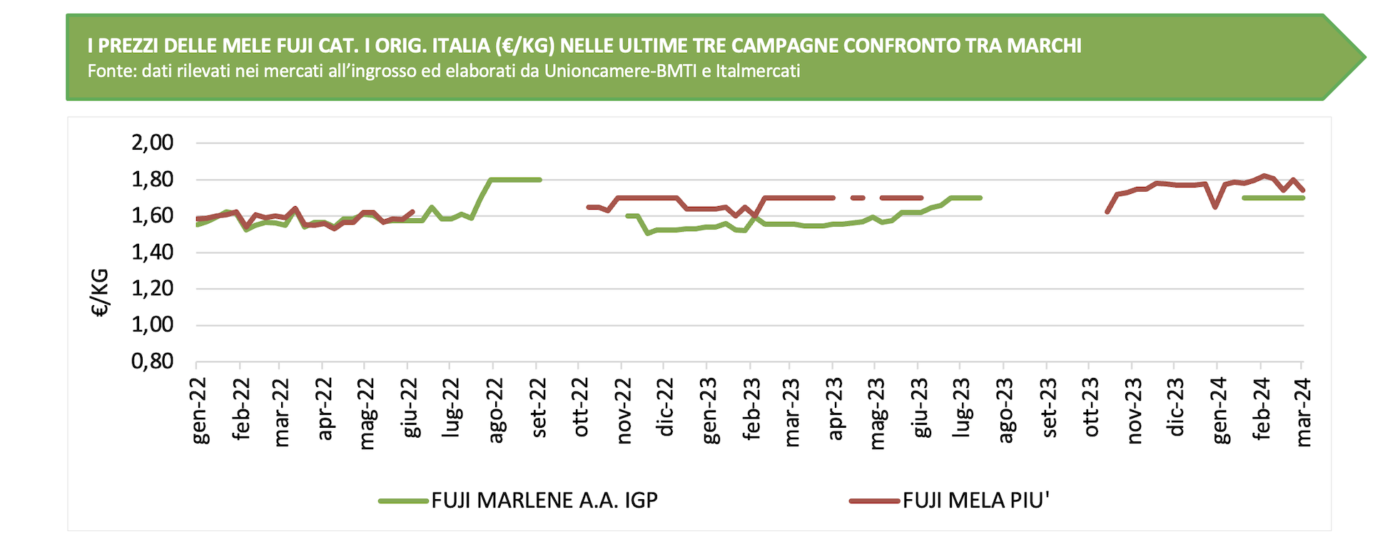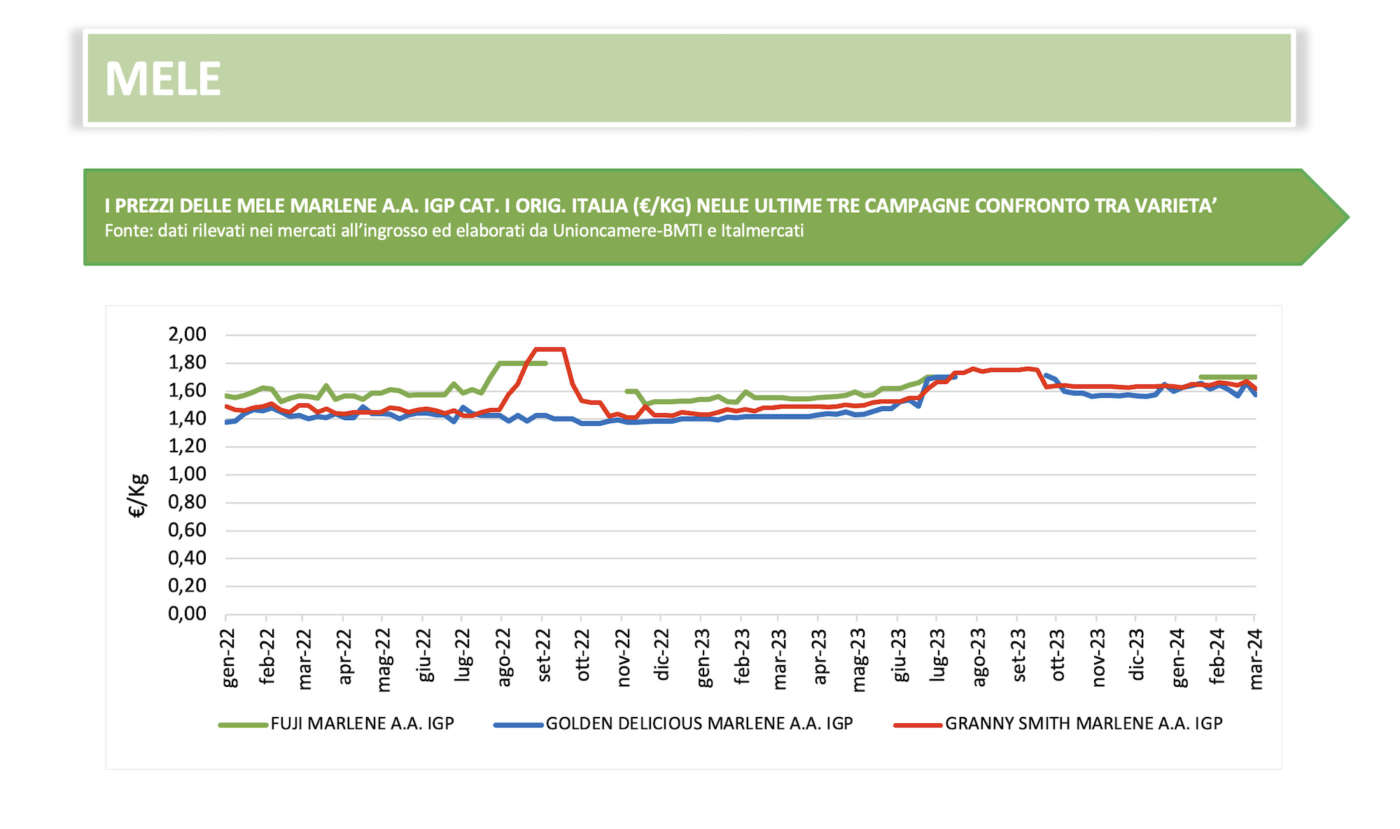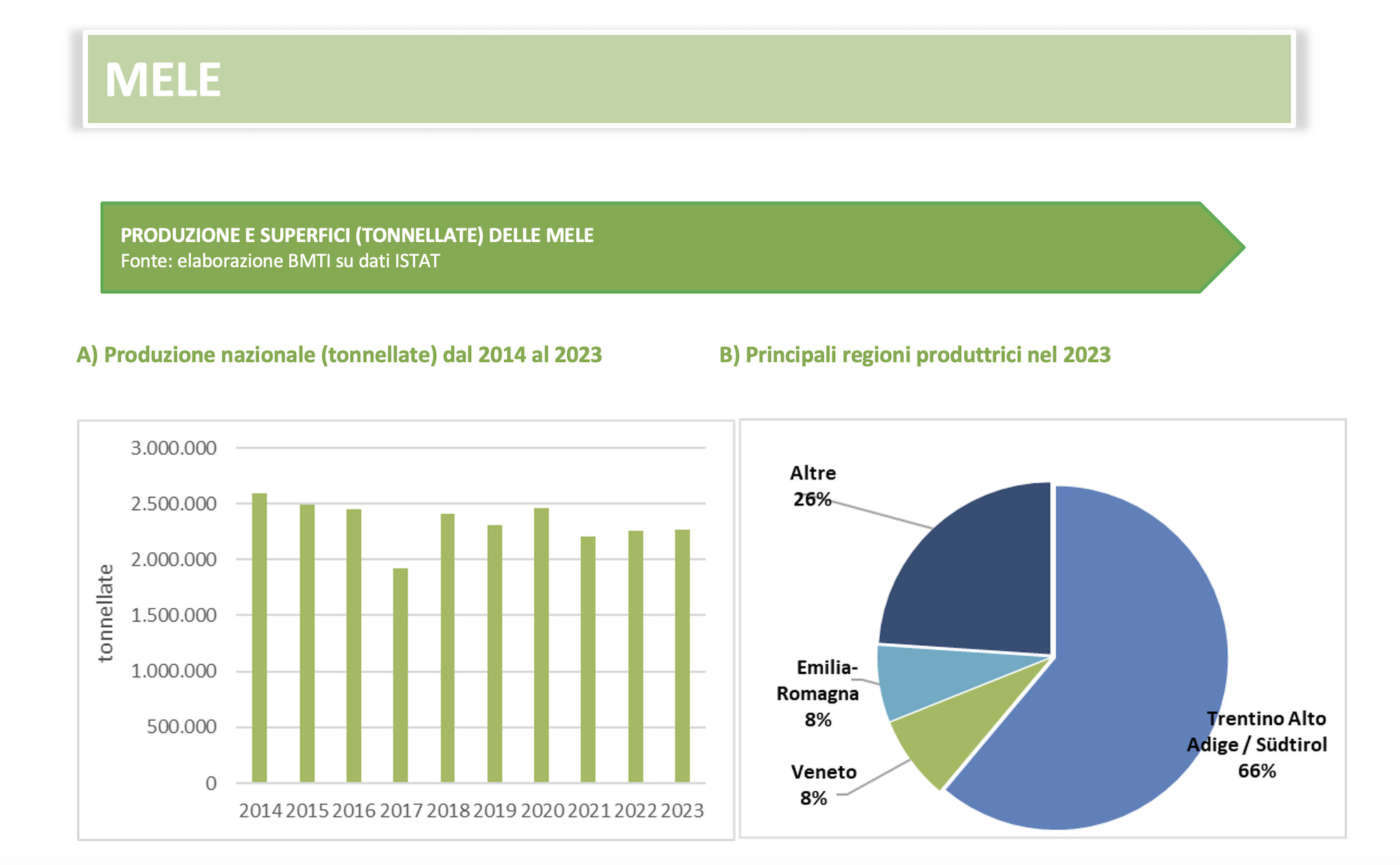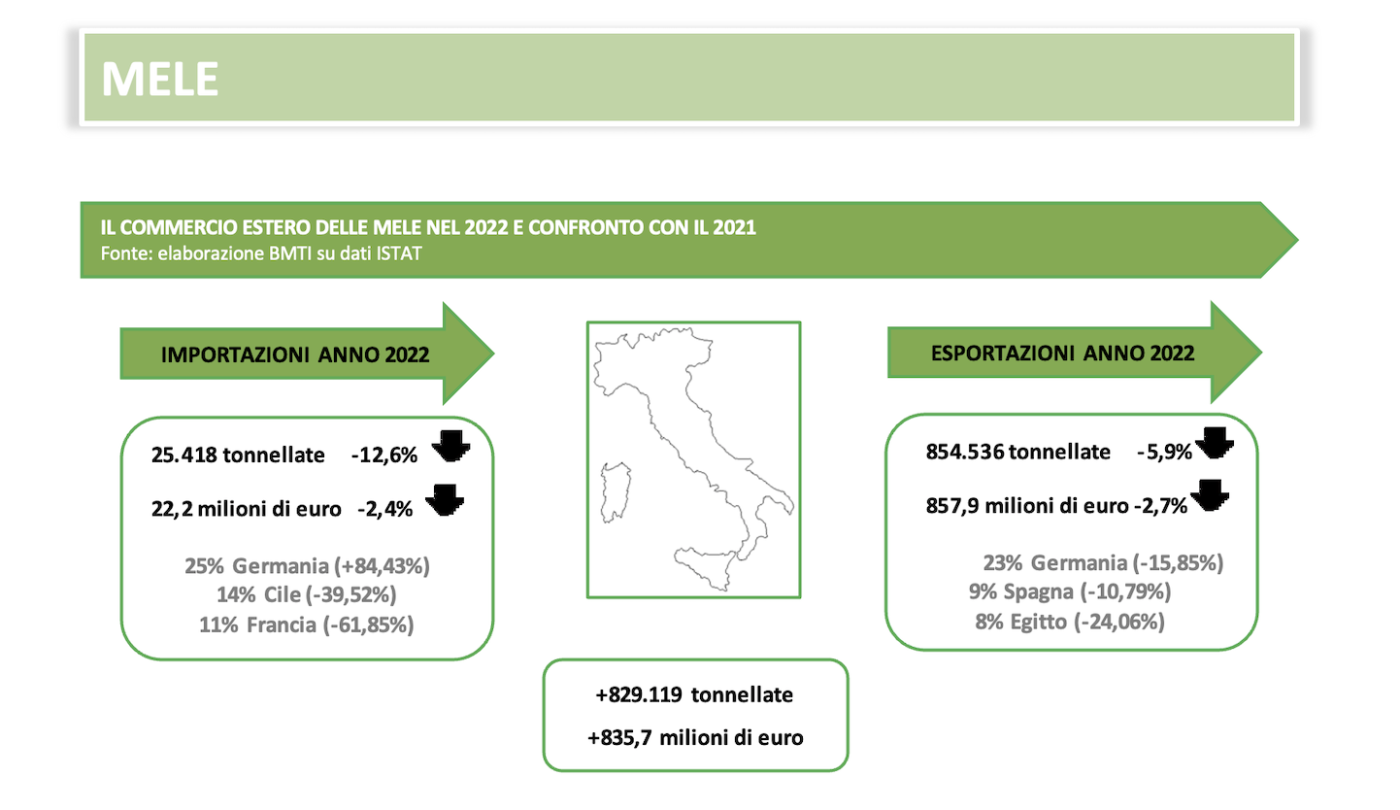Si può definire costante l’andamento dei prezzi delle mele Fuji: questa varietà ha un mercato ampio e consolidato; possiamo quindi considerarla una ‘mela di successo’. Se torniamo indietro a marzo 2014 i valori di mercato all’ingrosso per i due marchi Marlene e Mela Più, per i calibri 80-85 e 85-90 mm lavorati in padella, di circa 1,45 €/kg per Marlene e 1,55 €/kg per Mela Più. Nell’ambito di questa varietà è importante la scelta del clone: è fondamentale scegliere quelli migliori, ove spicchino elevate qualità organolettiche, buona colorazione e non guasterebbe buona resistenza al cracking.
Mele rosse, chi insidierà il ruolo della Fuji
I marchi principali hanno conservato la fiducia del consumatore e a distanza di un decennio il prezzo del loro prodotto ha tenuto. Basti pensare che prodotti simili ma generici (intesi non a marchio), realizzano prezzi molto inferiori (dall’euro a 1,25 euro al chilo). In futuro la solidità della Fuji sarà sicuramente minata dalle più recenti cultivar/marchi, quali Envy, Cosmic, Kanzi e altri, in quanto il mercato delle mele è in continuo mutamento.
Tra le gialle la Golden Delicious non ha rivali
Sembra non avere rivali invece la Golden Delicious, varietà a buccia gialla leader indiscussa tra le gialle; nonostante svariati tentativi di creare mele di analoghe caratteristiche, la Golden della regione Trentino Alto-Adige mantiene lo scettro. Qui nel grafico i due marchi principali a confronto: in linea di massima i prezzi sono sovrapponibili, forse la mela del Trentino riesce a spuntare qualche centesimo al chilo in più. La forma, il colore, la croccantezza della polpa sono i requisiti che la caratterizzano e non ultimo valore è la continuità; la troviamo infatti tutto l’anno, contrariamente alla Marlene che spesso a metà estate lascia il passo alla sorella della Val Venosta.
Mele verdi, la Granny Smith regna incontrastata
 Nell’ambito delle mele verdi non vi sono antagonisti alla Granny Smith e seppur con una quota di mercato contenuta, questa mela ha ampia e consolidata diffusione. Non avendo competitor possiede un mercato privilegiato che le ha consentito di mantenere quotazioni stabili nel tempo. Negli anni passati e solo nei periodi estivi ha talvolta sofferto delle produzioni oltreoceano di Cile e Argentina, ma ultimamente il pericolo sembra passato anche a causa dei sensibili aumenti che hanno subìto i trasporti. I valori sono mediamente tra 1,40 e 1,60 €/kg ma non mancano punte (principalmente d’estate ove è particolarmente gradita per la sua freschezza e acidità) di oltre 1,80 €/kg. I vari tentativi di coltivazione in pianura di questa varietà non hanno sortito gli effetti sperati in quanto i frutti prodotti risultano scarsi di brillantezza, colore e lenticelle, requisiti primari per questa cultivar.
Nell’ambito delle mele verdi non vi sono antagonisti alla Granny Smith e seppur con una quota di mercato contenuta, questa mela ha ampia e consolidata diffusione. Non avendo competitor possiede un mercato privilegiato che le ha consentito di mantenere quotazioni stabili nel tempo. Negli anni passati e solo nei periodi estivi ha talvolta sofferto delle produzioni oltreoceano di Cile e Argentina, ma ultimamente il pericolo sembra passato anche a causa dei sensibili aumenti che hanno subìto i trasporti. I valori sono mediamente tra 1,40 e 1,60 €/kg ma non mancano punte (principalmente d’estate ove è particolarmente gradita per la sua freschezza e acidità) di oltre 1,80 €/kg. I vari tentativi di coltivazione in pianura di questa varietà non hanno sortito gli effetti sperati in quanto i frutti prodotti risultano scarsi di brillantezza, colore e lenticelle, requisiti primari per questa cultivar.
Mele, Trentino Alto Adige campione d’Italia
 Anche se la produzione nazionale degli ultimi dieci anni dimostra qualche oscillazione nei volumi, vi è una certa stabilità che mantiene, anche per le quotazioni, un certo equilibrio. Certo, i fattori sono molteplici e non solo limitati a quanto succede nel nostro paese ma le annate come il 2017 hanno un peso significativo sui prezzi: già nel mese di novembre di quell’anno, a inizio campagna quindi, i prezzi delle mele all’ingrosso sono cresciuti di circa il 20% sull’anno precedente e nei primi mesi del 2018 sono saliti ulteriormente di circa un altro 20%. La regione Trentino Alto Adige è il cardine della produzione nazionale per le mele e nonostante sotto l’aspetto colturale sia molto attrezzata e preparata ad affrontare le avversità climatiche, quando si verificano in forma estesa e violenta o particolarmente cruda come alcune gelate tardive, portano ad una variazione sensibile dei prezzi.
Anche se la produzione nazionale degli ultimi dieci anni dimostra qualche oscillazione nei volumi, vi è una certa stabilità che mantiene, anche per le quotazioni, un certo equilibrio. Certo, i fattori sono molteplici e non solo limitati a quanto succede nel nostro paese ma le annate come il 2017 hanno un peso significativo sui prezzi: già nel mese di novembre di quell’anno, a inizio campagna quindi, i prezzi delle mele all’ingrosso sono cresciuti di circa il 20% sull’anno precedente e nei primi mesi del 2018 sono saliti ulteriormente di circa un altro 20%. La regione Trentino Alto Adige è il cardine della produzione nazionale per le mele e nonostante sotto l’aspetto colturale sia molto attrezzata e preparata ad affrontare le avversità climatiche, quando si verificano in forma estesa e violenta o particolarmente cruda come alcune gelate tardive, portano ad una variazione sensibile dei prezzi.
Meno import per le mele
 Lieve calo delle importazioni nel 2022: salvo annate particolarmente negative, l’ampio panorama varietale nazionale a disposizione e l’allungamento dei tempi di conservazione consente all’Italia di essere quasi autosufficiente per quanto riguarda il comparto mele. Gli ultimi dati evidenziano che a fronte di un 37% circa di esportazioni sul totale prodotto, importiamo un quantitativo di poco superiore al 1% della nostra produzione in termini di volumi. Il saldo è ampiamente positivo.
Lieve calo delle importazioni nel 2022: salvo annate particolarmente negative, l’ampio panorama varietale nazionale a disposizione e l’allungamento dei tempi di conservazione consente all’Italia di essere quasi autosufficiente per quanto riguarda il comparto mele. Gli ultimi dati evidenziano che a fronte di un 37% circa di esportazioni sul totale prodotto, importiamo un quantitativo di poco superiore al 1% della nostra produzione in termini di volumi. Il saldo è ampiamente positivo.
Apples, who wins among red, green, and yellow ones
From varieties with a consolidated market, to the emerging Envy, Cosmic and Kanzi apples: the state of the art on the trend concerning apple prices over the last ten years
The price trend of Fuji apples can be defined as constant: this variety has a large and consolidated market; we can therefore consider it as a ‘successful apple’. If we go back to March 2014, the wholesale market values for the two brands Marlene and Mela Più, for the pan-processed 80-85 and 85-90 mm calibres, were around €1.45/kg for Marlene and € 1.55/kg for Apple Plus. Within this variety, the choice of clone is important: it is essential to choose the best ones, where high organoleptic qualities, good colouring, and good resistance to cracking stand out.
The main brands have retained consumer trust, and a decade later the price of their product has held up. Suffice it to say that similar but generic products (intended as not branded) obtain much lower prices (from € 1/kg to €1.25/kg). In the future, Fuji’s solidity will certainly be undermined by the most recent cultivars/brands, such as Envy, Cosmic, Kanzi, and others, as the apple market is constantly changing. On the other hand, Golden Delicious, the yellow-skinned variety, undisputed leader among the yellow varieties, seems to have no rivals; despite various attempts to create apples with similar characteristics, Golden variety from Trentino Alto-Adige region holds the sceptre. Here in the graph the two main brands are compared: in general, the prices are comparable, perhaps the apple from Trentino manages to obtain a few cents more per kilo. Shape, colour, and crunchiness of its pulp are the requirements that characterize it, and, last but not least, continuity is a value; in fact, we find it all year round, unlike Marlene variety, which often gives way to its ‘sister’ from Val Venosta in mid-summer.
In the field of green apples, Granny Smith has no rivals, and, although with a limited market share, this apple has a wide and consolidated diffusion. Having no competitors, it has a privileged market, which has allowed it to maintain stable prices over time. In past years and only in the summer periods, it has sometimes suffered from overseas production in Chile and Argentina, but recently the danger seems to have passed also due to the significant increases in transport costs. The values are on average between € 1.40/kg and € 1.60/kg, but there are some peaks (mainly in summer, when it is particularly appreciated for its freshness and acidity) of over € 1.80/kg. The various attempts to cultivate this variety on the plains have not had the desired effects, as the fruits produced are poor in terms of brightness, colour and lenticels, primary requirements for this cultivar.
Even if national production over the last ten years shows some fluctuations in volumes, there is a certain stability that maintains a certain balance, even for prices. Of course, the factors are many and not only limited to what happens in our Country, but such vintages like 2017 have a significant impact on prices: already in the month of November of that year, therefore at the beginning of the campaign, wholesale prices of apples increased by approximately 20% compared to the previous year, and in the first months of 2018 they further increased by approximately another 20%. Trentino Alto Adige remains the cornerstone of national apple production and, although in terms of crops it is very well equipped and prepared to face climatic adversities, when they occur in a widespread and violent or particularly harsh form such as some late frosts, they lead to a significant change in prices.
A slight decline in imports was recorded in 2022: with the exception of particularly bad years, the broad national varietal panorama available and the lengthening of storage times allows Italy to be almost self-sufficient in the apple sector. The latest data highlights that compared to approximately 37% of exports on the total product, we import a quantity of just over 1% of our production in terms of volumes. The balance is largely positive.










